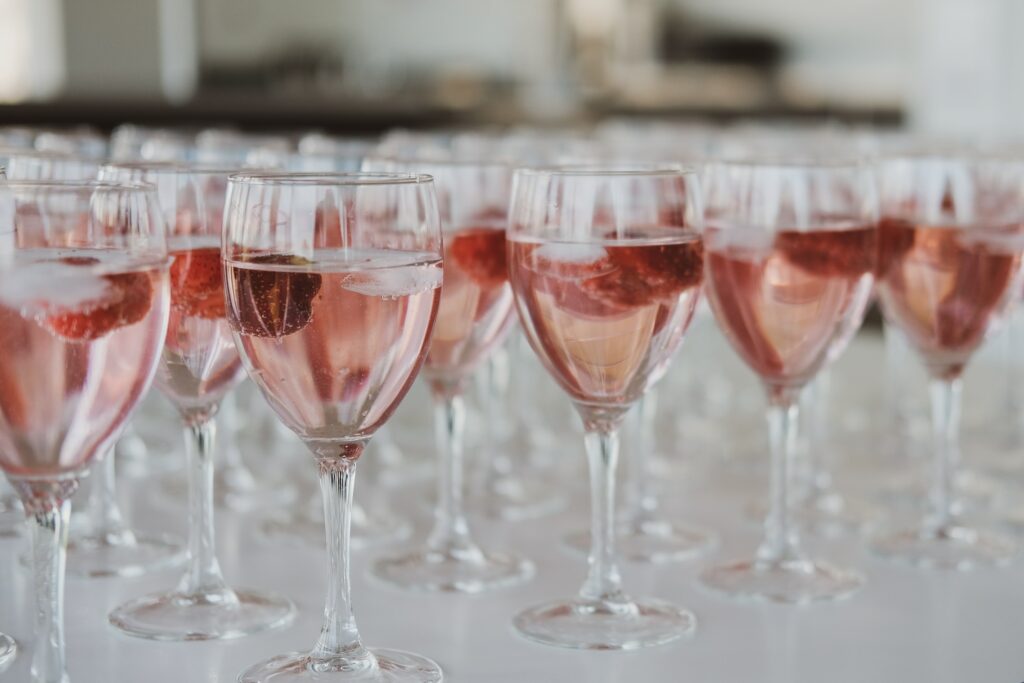How Is Rosé Wine Made? One of the most popular drinks in France, rosé wine is made from any grape used to make red wines. It combines with tropical climates and pairs well with a variety of dishes. Its production and consumption date back to the Phoenicians and the Greeks, around 1500 to 600 BC.
The Greeks diluted red wine with water as they believed that it was the safest measure in preventing microorganisms, and they also thought that anyone who consumed undiluted wine could go mad.
Later the Romans used their trade connections to make rosé wine the most popular drink in the Mediterranean. You can also watch this and other exclusive GA Originals on YouTube.
Every time I open a bottle of wine, it is an amazing trip somewhere.
-José ANDRES
Jump To Section
4 Production Methods
Rosé wine is made using 4 methods: Short Maceration, Direct Pressing, Bleeding, and Blending methods.

Short Maceration
Short Maceration is the most common way of producing rosé wine. It can happen before or during alcoholic fermentation. The process is the same as for red wine. The difference is that the grape skin is in contact with the must for about 6 to 48 hours, leaving just enough time to guarantee the pink color according to the winemaker’s expectations. The longer the maceration, the darker and richer the flavor of the rosé wine.
Direct Pressing
Direct Pressing is done with red grapes pressed immediately, causing the must contact the skins for an extremely short time, sometimes referred to as vin gris or blanc de noirs for sparkling rose wines.
Bleed or Saignée
Bleed or Saignée in French is a method carried out at the beginning of the red wine fermentation when about 10% of the liquid that already has the pink color is withdrawn or “bled” from the original tank to another, where it will be fermented, and produce the rosé wine.
This method is common in wine regions that produce fine red wines, such as Napa Valley and Sonoma, generating more concentrated rosé wines in color and structure, with notes of cherry, blackberry, blueberry, and herbs like eucalyptus or bay leaves.
Blending Method
Blending Method combines reds and whites that have already been vinified to produce rosé wines. Generally, these wines will have up to 5% or more red wine, as you don’t need a considerable amount to dye a white wine to rosé.
The method may seem simple, as it is similar to how the ancients diluted red wines with water to make their rosé. However, the harmony between white and red wines requires the winemaker’s attention to make the final product enjoyable.
This process is very uncommon in the production of rosé wines but popular in the Champagne region of France for making Champagne rosé. French winemakers produce white wine, often Chardonnay, and add a percentage of red wine, usually from the Pinot Noir grapes.
The epicenter of the world’s rosé production is Provence, France, with its dry, delicate flavor and slightly orange-pink color. However, rosé production is not limited to France itself but to all countries that have set out to produce fine wines.
Did you like this article?
I hope this article has improved your wine skills. To learn more about wines, take a look at the Sauvignon Blanc: The Enthusiast’s Guide To Wine Lovers.
Leave a comment below and share our content.
Help our community grow by following our social media on Spotify, Instagram, Facebook, Youtube, and Tiktok. And stay up to date with the news from the world of Gastronomy.
Don’t forget to tag @gastrovinoacademy on Instagram and hashtag it #gastrovinoacademy.
Cheers 🍷


